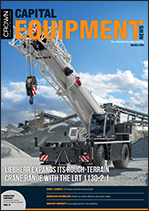 COVER STORY: Liebherr has launched the most powerful rough-terrain crane on two axles on the market. The LRT 1130-2.1 has a maximum lifting capacity of 130 tonnes and extends Liebherr’s range of rough-terrain cranes at the top end of this segment.
COVER STORY: Liebherr has launched the most powerful rough-terrain crane on two axles on the market. The LRT 1130-2.1 has a maximum lifting capacity of 130 tonnes and extends Liebherr’s range of rough-terrain cranes at the top end of this segment.
The new LRT 1130-2.1 offers the highest lifting capacities and the longest telescopic boom of any 2-axle rough-terrain crane globally. It also has the most economical transport dimensions in its performance class.
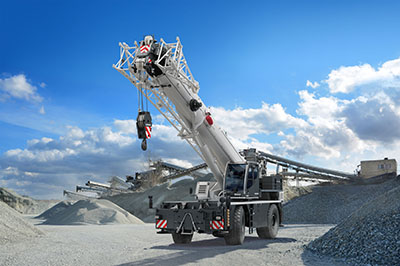 The essence of the LRT 1130-2.1 is maximum performance with economical mobility worldwide. The new Liebherr rough-terrain crane is the only 130-tonne crane on a 2-axle chassis.
The essence of the LRT 1130-2.1 is maximum performance with economical mobility worldwide. The new Liebherr rough-terrain crane is the only 130-tonne crane on a 2-axle chassis.
At the same time, its telescopic boom is the longest in its class at 60 m. It consists of the pivot section and six telescopic sections and is extended and bolted automatically with the Liebherr TELEMATIK high-speed telescopic system. A 10.8 m single folding jib or a 10.8 –19 m double folding jib is available for the LRT 1130-2.1. It is mounted at angles of 0°, 20° or 40° or can be hydraulically tilted from 0° to 40°.
With an additional 7 m lattice section as a telescopic extension, this new crane reaches hook heights of up to 85 m. The folding jib is carried on the right-hand side of the boom. At the same time, a 2.9 m assembly jib can be attached to the left-hand side of the boom. A side-folding rooster sheave, operated in 2-line mode, rounds off the boom options.
Liebherr has designed the dimensions of the new LRT 1130-2.1 to transport it economically on low-loaders worldwide. Its width is 3.4 m, its height is 3.85 m, and its chassis length is 9.4 m. The transport weight is 48 t without ballast but with the folding jib and hook block. This can be reduced to 44.8 t.
These values are unique in the class of powerful 2-axle all-terrain cranes. A permit-free standard transport vehicle is sufficient for the 20 t ballast and additional equipment. The counterweight comprises three ballast slabs attached to the slewing platform via self-assembly with ballasting rams.
COMPACTION EQUIPMENT: Wacker Neuson’s lineup, from the renowned RD series to the RTx trench roller and expansive RC soil compactor range, embodies the company’s commitment to meeting customer and market demands.
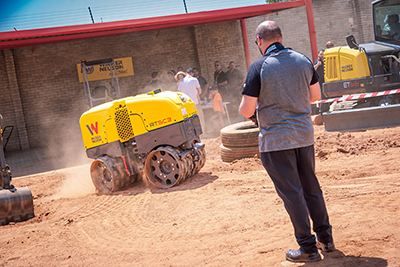 Tailored for multiple markets across Sub-Sahara Africa, these robust and versatile rollers feature ergonomic designs, innovative attributes, and cutting-edge technology addressing efficiency, productivity, and operator safety and comfort. “Incorporating a dual-vibration system, our diesel and petrol RD7 and RD10 walk-behind rollers stand out for exceptional performance in soil and asphalt compaction,” says Stefan le Roux, Wacker Neuson Sales Manager for Sub-Saharan Africa.
Tailored for multiple markets across Sub-Sahara Africa, these robust and versatile rollers feature ergonomic designs, innovative attributes, and cutting-edge technology addressing efficiency, productivity, and operator safety and comfort. “Incorporating a dual-vibration system, our diesel and petrol RD7 and RD10 walk-behind rollers stand out for exceptional performance in soil and asphalt compaction,” says Stefan le Roux, Wacker Neuson Sales Manager for Sub-Saharan Africa.
“The duel on/off frequency vibration selector provides two vibration stages, enhancing safety and boosting productivity. The ergonomically arranged operator control elements are conveniently located on the guide handle, ensuring complete control without the need to move around the machine.”
The RD10 for Africa Reflecting on the positive evolution of the RD7 in the African market, Le Roux notes, “Relocating manufacturing and implementing a proactive buy-back program has been pivotal. The redesigned RD7 from Germany, introduced in 2021, now holds a prominent position in the South African market, a testament to our commitment to customer satisfaction.” As Wacker Neuson aims to fortify its presence in the African market, the new RD10 takes centre stage. John Ramshaw, Wacker Neuson South Africa’s Key Account Manager: Agriculture, elaborates on the introduction, saying, “Hosting an event in Q2 2023 allowed us to gather feedback from customers and dealers, shaping the RD10 uniquely for Africa. Based on the RD7 design, the RD10 retains the best features while incorporating enhancements for optimal customer solutions.”
WHEEL LOADERS: Asphalt is made when mixing raw aggregates supplied by quarries with bitumen, a by-product of the fuel refining industry. At the Much Asphalt plant in Gqeberha (formerly Port Elizabeth), the company’s Maintenance Supervisor of some 34 years, Louis Blume, tells us more: “We’re a major supplier of asphalt to SANRAL (the South African National Roads Agency SOC Limited), a host of district and local municipalities, private contractors, and even smaller customers like plumbers who all work with asphalt in one way or another. We have ten different mixes that we make up and these each contain different sizes of dry aggregates that we receive from various quarries in our area. The different aggregates are stockpiled in separate concrete compartments.”
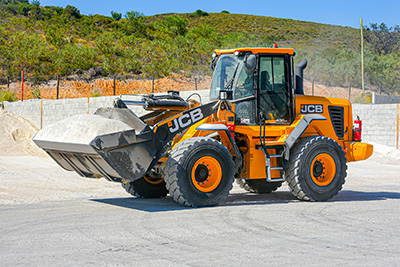 The other raw product, bitumen, is obtained from fuel refineries where it is pumped into road tankers at 120ºC and then kept hot during transit to arrive at Much Asphalt’s plant in Gqeberha at a temperature of around 150ºC to maintain and improve its viscosity.
The other raw product, bitumen, is obtained from fuel refineries where it is pumped into road tankers at 120ºC and then kept hot during transit to arrive at Much Asphalt’s plant in Gqeberha at a temperature of around 150ºC to maintain and improve its viscosity.
“We receive our orders for the following day’s delivery during the afternoon and then plan our production,” Blume adds.
“We use a wheel loader to load the bins with the various aggregates from where the exact amounts are weighed to be mixed with the hot bitumen.”
The machine is a JCB 436ZX Wheel Loader with a standard 2,6 cubic metre bucket. Much Asphalt delivered it in May 2022 after their previous loader was moved to another branch. “Having the new JCB 436ZX Wheel Loader has boosted our confidence to keep delivering the quality product that we’re known for, as given the tight timeframes we work to we simply cannot afford to have equipment go down in our production cycles,” Blume explains.
“Our JCB Wheel Loader would normally be active for around 10 hours in a regular day shift but when we’re under pressure and work extended shifts, that number could increase to anything between 13 to 19 hours in a 24-hour cycle.” Louis adds that during a typical day shift, their JCB 436ZX Wheel Loader would load 1,000 tons of dry aggregates into the bins and has other duties, like stockpiling the aggregates delivered to ensure more effortless loading. Working on a concrete base, the JCB 436ZX Wheel Loader’s bucket is fitted with a half-arrow cutting edge.
INDUSTRY DIVERSITY: In a move toward gender diversity, Volvo Construction Equipment (Volvo CE) and its dealer partners are catalysing a shift in the traditionally male-dominated field of mechanics across Africa.
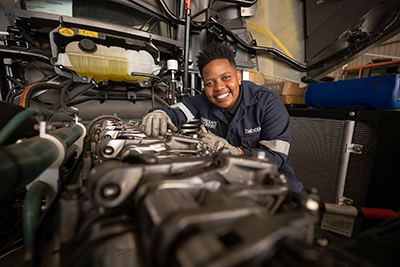 This not only opens new avenues for women but also enriches the aftermarket service experience for customers. Volvo CE’s vision to “build the world we want to live in” extends beyond sustainability and connectivity—it embodies a resolute commitment to achieving gender equality. Setting a bold target of having at least 35% female leaders and employees by 2024, Volvo CE initiated various programs to encourage women, particularly young women, to consider careers in the construction equipment industry. The impact is not only evident within Volvo CE but also resonates among its network of dealer partners.
This not only opens new avenues for women but also enriches the aftermarket service experience for customers. Volvo CE’s vision to “build the world we want to live in” extends beyond sustainability and connectivity—it embodies a resolute commitment to achieving gender equality. Setting a bold target of having at least 35% female leaders and employees by 2024, Volvo CE initiated various programs to encourage women, particularly young women, to consider careers in the construction equipment industry. The impact is not only evident within Volvo CE but also resonates among its network of dealer partners.
Babcock, Volvo CE’s dealer partner in Southern Africa, showcases a vibrant team of female mechanics. Thando, a 26-year-old mechanic at Babcock, started her journey through an apprenticeship program in 2019. “My fascination with mechanics started at a young age when I helped fix my father’s taxis,” she says. “On my journey, I met an amazing neighbour who taught me that mechanics is about more than just cars. His help sparked a strong interest in me. I’ve had incredible mentors guiding me.”
According to Thando she joins training sessions on Saturdays where the group will simulate faults and solve problems. “Day-to-day, I handle various tasks like stripping engines and overhauling transmissions and brakes. I’m also the designated driver on site. I manage the loading and off-loading of machines from transport. I’m licensed to operate everything from forklifts to rigid trucks. Right now, I’m focused on advancing my career. I’m studying instrumentation at Unisa. It helps me stay up to date with improvements in engine management, emissions, control, telematics, and other related topics,” she adds.
ROADMAKING: Machine manufacturers and construction companies around the globe are currently searching for ways to achieve the goal of climate-neutral construction. The challenge here is to successively reduce CO2 and other harmful greenhouse emissions around the world to zero over the coming decades. Dr Günter Hähn, CEO of Wirtgen GmbH and Dr Markus Bach, Project Lead Sustainability for Wirtgen Group, look at how this can be achieved.
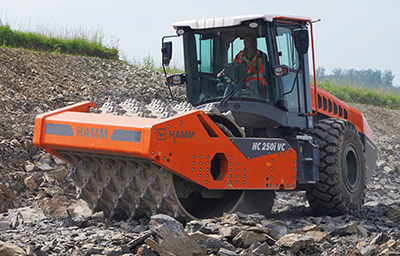 I n the road construction sector, this transformation is inextricably linked to improving and further developing production and working processes. In the future, machines and construction materials will also be assessed based on the climate-harmful emissions arising from their production and use.
I n the road construction sector, this transformation is inextricably linked to improving and further developing production and working processes. In the future, machines and construction materials will also be assessed based on the climate-harmful emissions arising from their production and use.
However, the focus should not be on individual machines but on the entire process leading up to the finished product – a road. Road construction targets In 2015, the United Nations adopted the Agenda 2030. With the agenda, the global community aims to enable people on all continents to live a life in dignity and conserve vital natural resources sustainably. Economic, ecological, and social aspects all play a critical role.
Governments around the world, civil society, and private enterprises are called upon to contribute to the realisation of the Sustainable Development Goals set out in Agenda 2030. Above and beyond such demands, the construction industry already faces specific on-site requirements for using non-fossil fuels or deploying machines with local zero emissions – for instance, in the Nordic nations.
In light of this and their obligations to future generations, many leading players in the construction sector and numerous small and mid-size companies are setting their own goals to mitigate climate change. As a leading manufacturer of road construction machines, the Wirtgen Group has also set concrete goals for its realisation over several steps.
For example, Wirtgen, Vögele, Hamm, and Kleemann will increase the availability of machines powered by hybrid or fully electric drive systems by 2026. In addition, all Wirtgen Group product brands, including Benninghoven, will offer machines and plants that can be operated with non-fossil or climate-neutral fuels. Last but not least, the digitalisation of machines will significantly contribute to process optimisation and, in turn, lead to further reduced harmful emissions.






